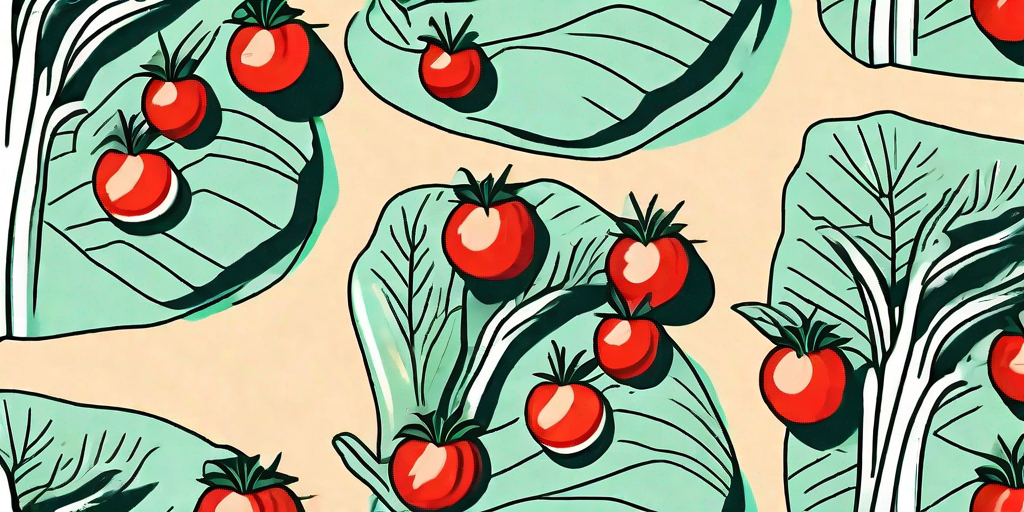
If you're a tomato enthusiast, then you're in the right place. We're about to reveal the secret to growing the juiciest tomatoes you've ever tasted. And the magic ingredient? Mulch! Yes, you heard it right. That humble pile of organic matter can transform your tomato growing game. So, buckle up, dear reader, as we embark on this juicy journey together.
The Magic of Mulch
Before we dive into the nitty-gritty of tomato cultivation, let's take a moment to appreciate the unsung hero of our story - mulch. Mulch is like the best friend you never knew your tomato plants needed. It's the Robin to your tomato plant's Batman, the Watson to its Sherlock, the... well, you get the idea.
But what exactly is mulch? In simple terms, mulch is a layer of organic or inorganic material that is spread around the base of your plants. It serves several purposes, such as conserving moisture, improving the fertility and health of the soil, reducing weed growth, and enhancing the visual appeal of the area.
Now that we've established the importance of mulch, let's delve into how it can help you grow those luscious, juicy tomatoes you've been dreaming of.
Why Tomatoes Love Mulch
Tomatoes are the divas of the vegetable world. They demand constant attention, plenty of sunlight, and just the right amount of water. And like any diva worth their salt, they thrive in the right environment. This is where mulch comes into play.
Firstly, mulch helps to regulate soil temperature. Tomatoes prefer their soil like a well-made cup of tea - not too hot, not too cold, but just right. Mulch acts as an insulator, keeping the soil cool during hot summer days and warm during cool nights.
Secondly, mulch helps to retain moisture. Tomatoes are thirsty plants and need a steady supply of water. However, too much water can lead to problems like root rot. Mulch helps to maintain the perfect balance by absorbing excess water and slowly releasing it back into the soil.
Lastly, mulch helps to prevent weeds. Weeds are like the annoying siblings who steal all the attention (and nutrients) from your precious tomato plants. Mulch acts as a barrier, preventing weed seeds from sprouting and stealing the limelight.
Choosing the Right Mulch for Your Tomatoes
Not all mulches are created equal. Some are better suited for tomatoes than others. Let's take a look at some of the best options.
Straw
Straw is a popular choice for tomato mulch. It's cheap, readily available, and easy to spread. Plus, it's light in color, which helps to reflect sunlight back onto the plants, giving them an extra dose of those sweet, sweet rays.
However, straw can attract pests like slugs and snails, so it's best to use it in combination with other pest control measures.
Compost
Compost is another excellent option. It's rich in nutrients, improves soil structure, and helps to retain moisture. Plus, it's a great way to recycle kitchen scraps and yard waste.
However, compost can sometimes harbor weed seeds, so it's best to use well-composted material that has been heated to kill any unwanted guests.
Grass Clippings
Grass clippings are a great option if you're on a budget. They're free, readily available, and packed with nutrients. Plus, they break down quickly, adding organic matter to the soil.
However, grass clippings can form a thick mat that prevents water from reaching the soil, so it's best to spread them thinly and mix them with other types of mulch.
How to Mulch Your Tomato Plants
Now that you've chosen your mulch, it's time to get down to business. Here's a step-by-step guide on how to mulch your tomato plants.
- Prepare the soil: Before you apply the mulch, make sure the soil is moist. Water your plants thoroughly a day or two before mulching.
- Apply the mulch: Spread a 2-3 inch layer of mulch around the base of your plants. Be careful not to pile it up against the stems, as this can lead to rot.
- Maintain the mulch: Over time, the mulch will break down and need to be replenished. Check the thickness of the mulch regularly and add more as needed.
Frequently Asked Questions
Can I use mulch in containers?
Yes, you can use mulch in containers. It can help to conserve moisture and regulate soil temperature, just like in the garden. However, be careful not to overwater, as containers can become waterlogged more easily than garden beds.
Can I use inorganic mulch?
Yes, you can use inorganic mulch like plastic or rubber. However, these types of mulch do not improve soil fertility or structure, and they can be less visually appealing than organic mulch.
Can I use newspaper as mulch?
Yes, you can use newspaper as mulch. It's a great way to recycle and it can help to suppress weeds. However, it can become compacted and prevent water from reaching the soil, so it's best to use it in combination with other types of mulch.
So there you have it, tomato lovers. The secret to growing juicy tomatoes is mulch. Now go forth and mulch, and may your tomatoes be the juiciest they've ever been!











